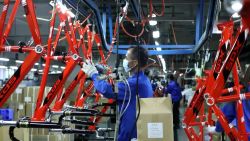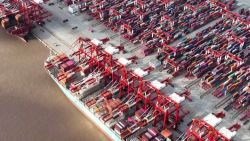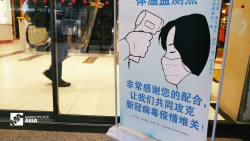Editor’s Note: Mary E. Lovely is a professor of economics at Syracuse University and non-resident senior fellow at the Peterson Institute for International Economics. The opinions expressed in this commentary are her own.

Trump is escalating his trade war against China, and American families are paying the price.
When President Donald Trump first initiated the trade war with China one year ago, he justified the action as necessary to open China’s markets and to secure America’s rights to its own intellectual property. Selling these actions as good for America, Trump promised that “trade wars are good and easy to win” and that China, not the United States, would bear the tariff burden.
Earlier this month, the president significantly increased the tariffs, and Americans are now staring down the barrel of a 25% tax on everything imported from China. The Chinese are ready to return the favor by increasing taxes on $60 billion of US exports. Is it really possible that taxes this high on one-fifth of US imports, coupled with crippling barriers to US exports, are good for Americans? Common sense and mounting empirical evidence tell us no; these tariffs burden American households and producers and offer no relief from the problems they were supposed to solve.
By now, it is likely no surprise to American families that tariffs raise the cost of living. Walmart said last week that new import duties would lead to higher prices on a wide variety of consumer goods newly targeted by the latest promised round of tariffs. Retail trade groups warn that higher prices will be the norm, as China provided about 41% of all apparel, 72% of all footwear and 84% of all travel goods imported into the United States in 2017. Given the likely timeline for this latest escalation, these price hikes should hit American parents just in time for back-to-school shopping.
More Markets & Economy Perspectives
Trump’s tariffs also burden US producers by raising the cost of inputs and supplies from China. In fact, intermediate goods and capital equipment — such as electric motors, bicycle parts and plastics — destined for American factories and workshops comprise the largest share of US imports from China. Higher costs for these supplies, which are directly involved in production processes, impair American competitiveness, reducing sales of US-made products both at home and abroad. They erode profits for American business owners and make it harder for American workers to see real pay increases. About 37% of US imports from China are computers and electronic devices, and all trade in this category soon may be taxed at 25%. As a result, American offices, factories, schools and homes will find it more difficult to make the investments necessary to keep pace with changing information technology.
The pain of higher costs for American manufacturers has so far paled beside the severe distress facing American farmers and ranchers, whose sales to China have plummeted since Trump’s trade war began. With tariffs looking more permanent with each passing day, planting for another season or raising another herd grows ever more challenging.
President Trump notes that firms that produce in the United States using only American suppliers can avoid tariffs. But American farmers, who largely fit this mold, are among those most hurt by tariffs, as they remain locked out of one of the largest and fastest-growing markets in the world. For other industries, local suppliers are simply non-existent. Wage differences between the United States and low-income countries are more than adequate to render American production of labor-intensive components infeasible. For example, the production of low-tech electronics, like power cords, has been moving away from China for years, but to Southeast Asia, not back to the States.
Lastly, the tariff war contributes to China’s economic slowdown, which hurts the hundreds of American companies that produce and sell within China, such as General Motors and Caterpillar, endangering the jobs back home that are linked to the success of these overseas activities. Many American jobs now depend on healthy overseas sales by American multinationals. The trade war risks pushing Chinese consumers away from US products, taking away American jobs in the process.
It is undoubtedly true that China also suffers because of the trade war. Factories close as new orders shift to producers in other parts of Asia or Mexico. Chinese companies find it more costly and difficult to access American technology, as they are clipped from Western supply chains, banned from importing high-tech products or unable to access advanced machinery. Although China will have greater difficulty climbing out of the “middle-income trap” because of the US trade war, it will continue to have access to European and Japanese products and technology.
As tariffs become broader, higher and more permanent without any relief from the changes in Chinese behavior they were supposed to elicit, it becomes increasingly likely that nothing will be gained by the American families who are paying the price of Trump’s trade war.




















